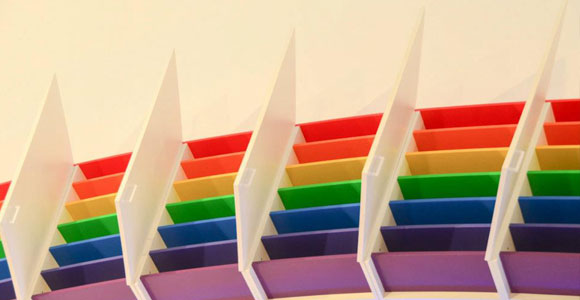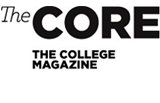
LGBT ... Q?
As attitudes towards sexual orientation have evolved in recent decades, so has the terminology. One word in particular—queer—has different connotations for different people.
Elizabeth Station
David Goldman, AB’72, came out to his parents at age 13. He was openly gay when he arrived at his dorm, Pierce Tower, in the 1960s—although a friend remembers Goldman’s mother telling her son, “You’re just doing this to be popular.”
With a group of politically radical students Goldman helped to found Gay Liberation, the first gay and lesbian student organization on campus. Members of the group reclamed the term “faggot” to satirize remarks by Chicago Seven prosecutor Thomas Foran. When in the early 1970s Foran told the Evanston Rotary Club, “We are losing our kids to a freaking fag revolution,” students created buttons with the words, “Freaking Fag Revolutionary.”
Yet Goldman and some from his generation feel uncomfortable with the word “queer,” used widely by academics and younger LGBTQ* activists as a positive expression of difference. “I think it’s very pejorative. It wasn’t used an adjective when I was growing up, like ‘queer culture,’” says Goldman. “It was used as a noun: ‘Get away from me, you filthy queer.’ It was a very negative word.”
Sensitivity to divergent views led the Center for the Study of Gender and Sexuality to choose carefully the name for its project to document the University’s LGBTQ history. Although the College course that launched the project was called Queer on the Quads, the archives project is called Closeted/Out in the Quadrangles: A History of LGBTQ Life at the University of Chicago.
Meanwhile, students like Connor Gilroy, a fourth-year who helps run Queers and Associates, the largest LGBTQ student group on campus, use the word “queer” to be inclusive. Besides its use in radical politics and academic theory, he says, the word also functions “in terms of identity, as an umbrella term” to embrace people other than just gay men and lesbians. “It is off-putting to some people,” Gilroy admits, but “I think it makes up for that by being welcoming to others.”
Does calling a person, group, or field of study “queer” reclaim the word and give it a positive new meaning? Goldman is unconvinced. “I don’t think you can put lipstick on a pig,” he says. “That’s just denying its history.”
*LGBTQ usually signifies lesbian, gay, bisexual, transgender, and queer—but some, including Goldman, prefer the last letter to stand for “questioning.” A recent New York Times article noted the emergence of the term LGBTQIA on college campuses, “which stands for different things, depending on whom you ask.”
